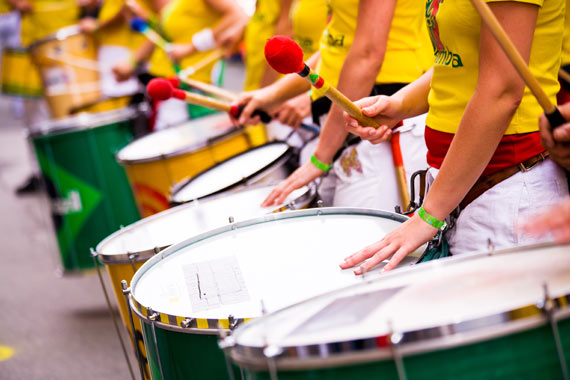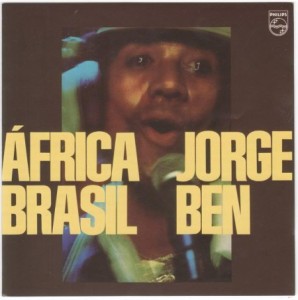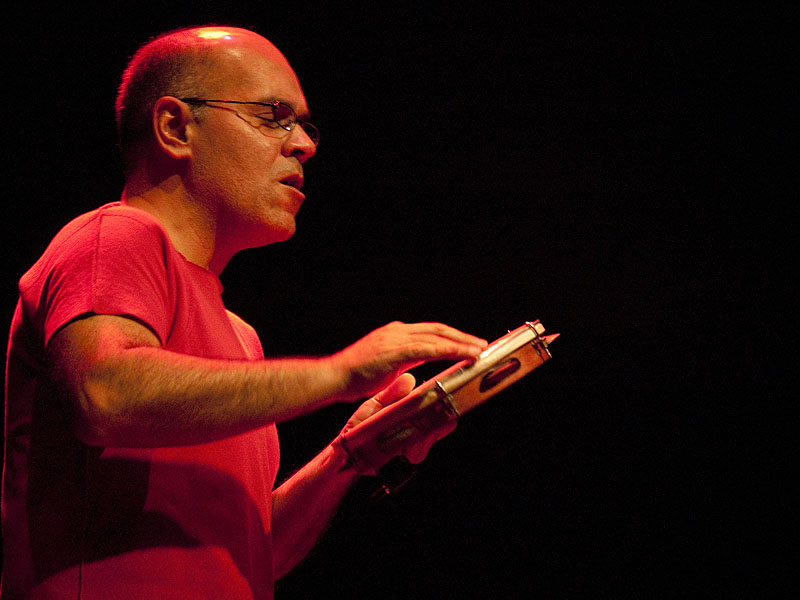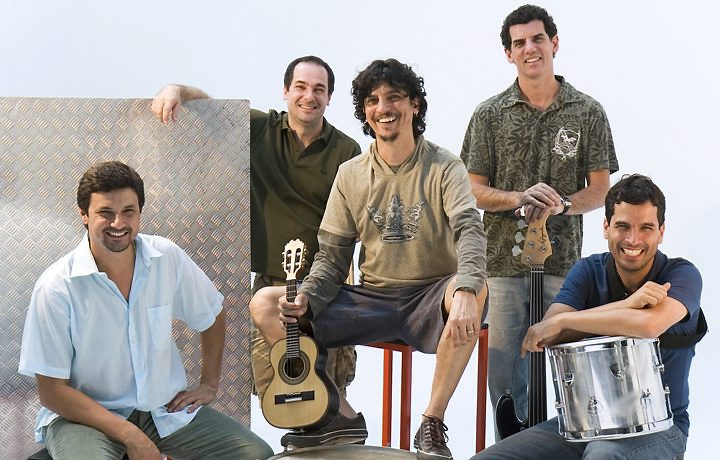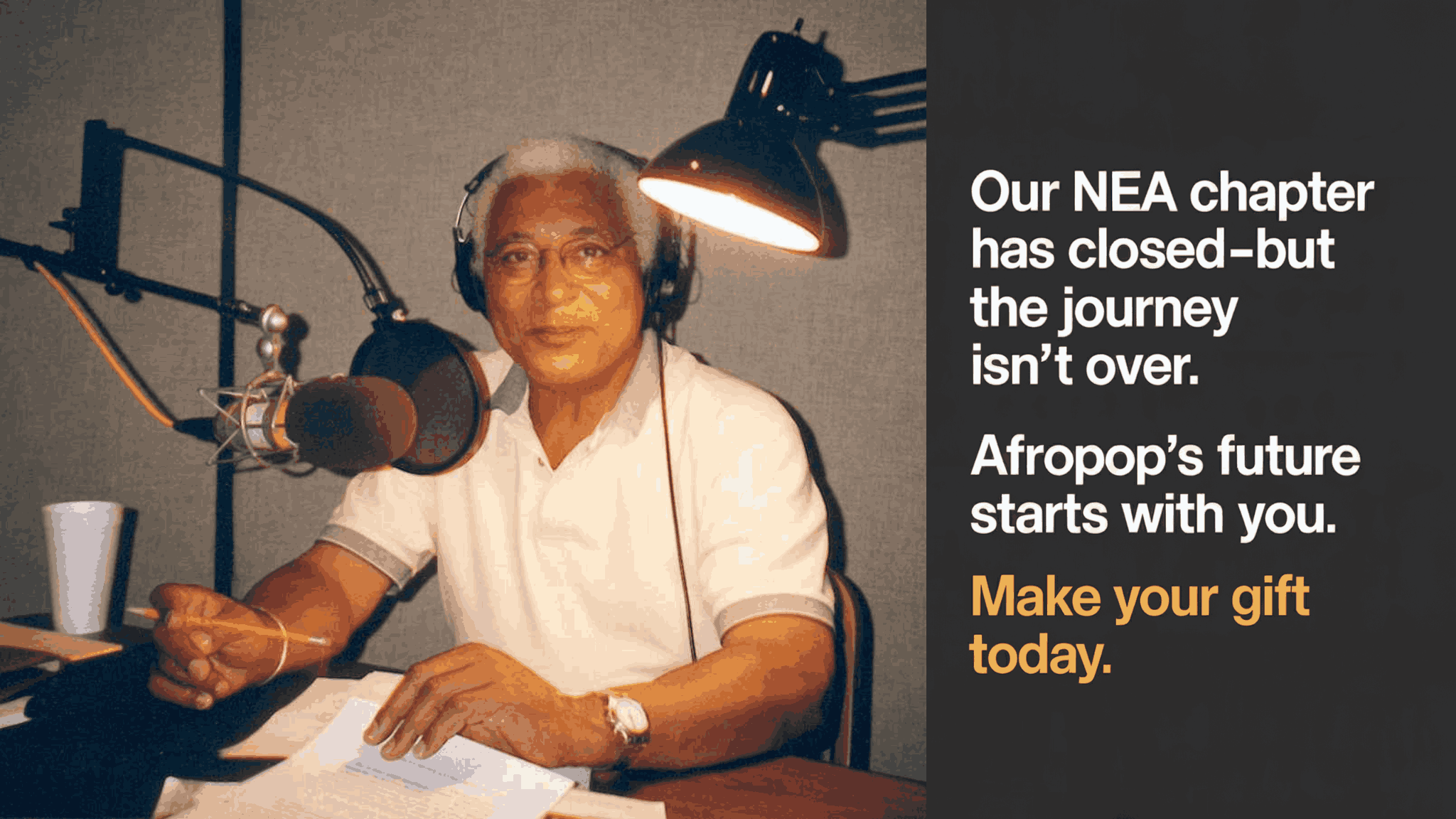Fred Moehn is an ethnomusicologist who studies Brazil and other Lusophone (that is, Portuguese-speaking) musical worlds. His new book, out on Duke University Press, is called ‘Contemporary Carioca,’ and it’s about the presence of samba in the pop music being made in Rio in the ‘90s and ‘00s, and how technology, culture and identity come together in process of music production.
Fred is our featured scholar in our program ‘Rio 2: Samba Strikes Back,’ a Hip-Deep exploration of music in 21st century Rio De Janeiro. Plus, check out part 1 of our Hip Deep in Rio series with ‘Rio 1: Samba and the Dawn of Modern Brazil.’
Marlon Bishop: I want to hear why you came to be interested in Rio. Did the city enchant you in some way personally? On an academic level what was interesting about it?
Fred Moehn: Great question. When I began my work, I intended to do it in Salvador. I always wanted to research music production in Brazil, but I was interested in how Salvador in the mid-'90s was becoming a real hot bed of popular music in Brazil.
So I went to Salvador in 1995 and I was beginning my research. One night I was out and the DJ played a song that I thought was interesting, mixing samba and funk and hip-hop. It turned out it was Fernanda Abreu, from Rio de Janeiro. So my next stop was Rio, I went down there and went to see the Mangueira samba school, and in fact, I did become enchanted. It was spectacular.
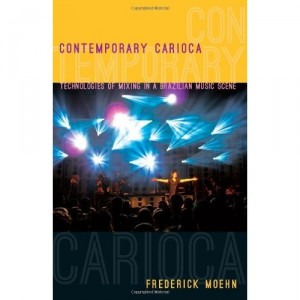
I did not really want to research samba because I felt that was kind of what the typical gringo researcher would do in Rio. But samba really is a force in Rio. You can’t avoid it, you don’t want to avoid it. It’s intense. The groove just draws you in. On that same trip I went to see Jorge Ben Jor on the beach in Ipanema – he was among the first to take samba and mix it with rock and roll in the ‘60s. At the same time, a friend of mine took me to one of the main recording studios in Rio, this legendary studio where all the greats of Brazil have recorded. So that sealed it for me.
It was clear for my project, which was popular music production in Brazil, that Rio was still the center of it. That's probably no longer so much the case. A lot people just record at home or in smaller studios, and Salvador now has more studios than it had and São Paulo has a lot as well. But, at the time, the major international studios in Rio were really the center for Brazilian popular music making.
Marlon Bishop: How do you see the role samba plays in the city of Rio specifically? Samba is on level the national popular music style of Brazil, but it has a special relationship to people in Rio, I think.
Fred Moehn: Yes. I'm not sure that I actually have the answer to that quite yet… but I think it’s a deep cultural trope about the way people even move, the way people behave, the way they dress, and the way they interact socially. The samba is, what you would say in Portuguese, the goma – the glue.
That rhythm is just so versatile. You can do so many things with it. So, I think that's part of it. You can mix funk with that very easily and it works very well. You can slow it down, and make bossa nova, or you can speed it up and kind of mix it with hip-hop.
You hear it everywhere. You could get on a bus and somebody could just grab a tamborim and start playing that rhythm. You also have a lot of music that may not really be samba, but you will pick out that rhythm inside of it. Or you might have the vocal part structured in a way that that rhythmic pattern is sung in the articulations of the vocal. What I'm trying to get at when I say it's a deep, cultural trope is that it doesn't necessarily have to be explicit. It functions on so many levels musically and culturally that I think it's deep in the unconscious.
And, on top of that, it's actually much more than just a rhythm. It's the sound of the drums, the heterophony of 200 or 300 drummers playing together. By that, I mean somebody might be a little ahead of the beat, somebody might be a little bit behind the beat, what they call the massaroca, the feeling of having dozens of people working around a rhythm, let's say. The “messiness” of it.
Actually, one of the things I talk about in the book is how groups like Monobloco or Pedro Luís e a Parede were trying to get at some of that massaroca, get at some of that messiness. There's just this tension between order and chaos in the samba. I think it reflects a tension between order and chaos in the city itself.
Marlon Bishop: Briefly – can you guide us through the role of samba in pop music from the ‘50s through today?
Fred Moehn: The '50s was, in fact, an interesting period. What was happening is you had the decade of the radio singers in the '50s. They were these great, belle canto singers of samba-canção, or samba song, who would sing with orchestral arrangements. The percussion around it was pretty timid, partly because limits of recording technology, but more so because the producers did not think that Afro-Brazilian drumming was particularly marketable and radio friendly.
So, the orchestras were getting bigger and bigger, and the singing was getting more and more sentimental. The bossa nova musicians in the late '50s reacted against that and sought to eliminate some of the extra baggage in the arrangements, most famously João Gilberto when he basically made bossa nova out of just guitar and voice.
He was really playing samba in many instances, but just a slightly different samba, a slightly mellower samba. There were modifications in composition, in arrangement but the general gist was that the bossa nova artists wanted to get rid of some of the bloat, what they considered the bloat of the great radio singer arrangements that were often played live in radio studios with orchestras, and just get back to the song form.
Then you had a second wave of bossa nova in the mid-'60s that incorporated other influences and became more socially conscious. That was a period when the left student movement was gaining strength for a short while before the dictatorship put a stop to that.
Then in the mid-60s, I mentioned Jorge Ben Jor. He's interesting because he wasn't able to play samba. He wanted to, but he didn't have the finger technique, so he ended up strumming his guitar, and that made an easy mix with rock.
I think what you get in the '70s is a bit of a bifurcation, so you have this term, MPB – música popular brasileira -- which begins to encompass mixtures of samba with rock. It’s basically Brazilian popular music made in major urban centers, and typically hybrid.
Then you have some people who are more in the samba camp, like Beth Carvalho and, most notably, Paulinho da Viola, who is a towering figure in making samba that is pop music, as well, but also very roots driven.
Then there’s Chico Buarque, who would be the other main figure in the ‘70s of those who are making samba pop music. Gilberto Gil and Caetano Veloso – the other MPB composers – always have samba in their songs, but Chico Buarque is really rooted in it.
So, there are various other people, too. You have the pagode movement already in the 1970s. The term pagode, traditionally, means a spontaneous party or gathering, so you have bands like the Fundo do Quintal emerging in this period, prioritizing acoustic instrumentation.
Marlon Bishop: And then what happens is that rock take over a little bit, right?
Fred Moehn: Exactly, going into the ‘80s, rock takes off, at least amongst the middle classes. Of course, '85 is the first direct presidential election, the end of the dictatorship and the return of the democracy, so for the youth of the South Zone, samba symbolized a Brazil of the past and they rejected it largely.
Then it’s in the ‘90s that samba begins to be of interest to the youth again.
It's a complete rediscovery. It begins to be a real trend. You have people like Marcos Suzano, who grows up on Led Zeppelin and Deep Purple, and beings to study pandeiro, the Brazilian samba drum. He is a fulcrum, a central figure, in the carioca scene in bringing percussion back into pop music, because he demanded a space for percussion in the mix.
He complained incessantly about in the production values that emerged in the ‘70s and ‘80s, percussion had been relegated to the background. This brings us full circle back to the ‘50s, which is precisely what had happened in the radio samba. Producers evidently felt that Brazilian percussion, or Afro-Brazilian percussion, if you will, should not be prioritized in a pop ensemble like a drum kit should be. This, to Marcos Suzano, was a misunderstanding of Brazilian musical values. So, he sought to invert those values and give percussion a place.
He came to the front of the stage. Instead of standing in the back and playing a little percussion perfume, a decoration to the pop ensemble, he comes out and sort of in a macho way to say, 'I can really kick some butt on this tambourine, and I'm playing various rhythms that are coming from the “afro” side of our culture.
He even invented a method of playing his instrument that allowed him to syncopate the low frequencies more than in typical samba. So, anyway, he begins to record with everyone in the '90s.
Marlon Bishop: Going to Rio today, where samba is just everywhere in popular music, it’s hard to imagine that at one point that wasn’t the case. So, we have Marcos Suzano. Who else helped generate new interest in the genre?
Fred Moehn: You have this group Monobloco, which was a spin-off from the band Pedro Luís e a Parede, who I’ll talk about in a second. They began doing workshops on samba percussion. The workshops really took off, so they decided to form a pop group which was also a bloco – one of the informal percussion ensembles that parade on the street during Carnival. Monobloco formed a bloco playing pop repertoire.
They're a fundamental force in the renewed interest in traditional samba percussion. Again, you have that metaphor of the masaroca, the mass of the sound of 100 drummers playing together where it can't possibly be perfect. It's certainly not the same thing as a drum machine.
They realized that. Actually, what they said is very interesting because, again, these are people who grew up on hard rock. I asked them, "What is it that you liked about that stadium rock?” And it was just that big sound, the heaviness of it, the giant guitar sounds and giant drums as well. So, they began to say, “What about our samba? What could be more heavy than a samba school, a battery of samba drums playing together?” So they took the heaviness of rock and mixed it with the heaviness of samba drumming.
Marlon Bishop: So it’s really an emphasis on percussion specifically that’s coming into this ‘90s and ‘00s pop movement, isn’t it?
Fred Moehn: Yes, in this period in the early '90s when Suzano emerged, the drum kit began to symbolize American cultural imperialism. It also came to be associated with “the guy from the record label,” who envisioned pretty standard formats for pop recordings. So people banished the drum kit. That’s an exaggeration – people still used drum kits, but there was a shift in priorities.
When Pedro Luís e a Parede first emerged, they did, in fact, get rid of the drum kit, and split it up among a few different musicians. What they said was, “There’s a big difference in having three or four guys banging on different drums, because no drummer has six arms.”
Marlon Bishop: Can you tell me why they called the band Pedro Luis and “A Parede - “The Wall”?
Fred Moehn: I think, in a sense, they were very much riffing off of what was going on in Pernambuco at the time which was the band Chico Science and Nação Zumbi, who started using the maracatu drums and had several people on stage playing drums. I don’t want to say Pedro Luis was copying that idea, because they weren’t, they already had a concurrent interest in this stuff. But I think they were, somewhat, paying homage to Chico Science.
The anecdote that they tell about their very first show is that Pedro Luis gave a stage direction, "At the end of the show, you guys, the percussionists, and the rest of the band, basically, all line up at the front of the stage and play. It's a line in front, like a wall."
Marlon Bishop: Ok, so this whole adjustment of bringing back samba and, by association, Brazilian-ness back into pop music, what were all these musician reacting to?
Fred Moehn: I think it had a lot to do with the new democracy, with Fernando Henrique Cardoso. Democracy is formally reestablished in '85 while '84 is the end of the dictatorship, '85 is the direct presidential election. The new constitution was in '88 and I think it becomes ratified in '89. But your first presidents were mired in corruption, like Collor. There was basically a question of national confidence amongst the younger generation.
Some people speak of the '80s as the lost decade because they grew up with rock, and while there was not a dictatorship, Brazil was not quite established as a modern democracy. Then in ‘94 Henrique Cardoso becomes president. He stabilizes the currency and stabilized the economy and Brazil begins to take its place in the world.
There began to be a search for “What is post-dictatorship Brazil? What is modern Brazil in a globalizing world?” So, there was a search for defining national identity through cultural practice and in Brazil historically, music has played a fundamental role in the definition of the Brazilian character. And right there in front of them, was the samba.







